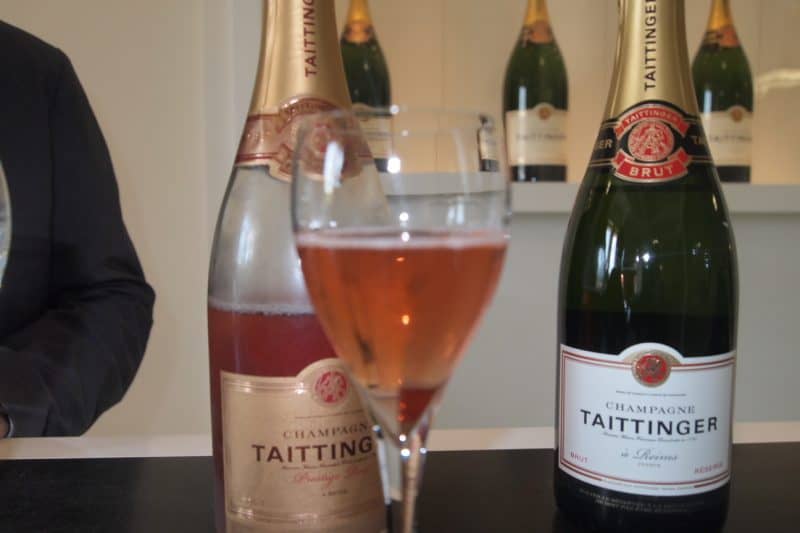Champagne Comes from an Ancient Abbey at Taittinger in Reims

No visit to Champagne would be complete without spending some time in a cave, and there are hundreds to choose from in Reims, the region’s largest city.
After touring the spectacular Palace next to the Cathedral, where we saw the original life-size statues created in the 1500s of kings, popes and dukes, we headed to Champagne Taittinger to take the subterranean tour.
It was a rare broiling day here in June and retreating to the cool of the caves was a great relief.
Jean-Pierre Redont told us the storied history of this house, which at about 14 million bottles year, is in the top ten but still dwarfed by Moet and Dom Perignon, who pump out 40 million bottles yearly.
These caves were once inhabited by monks, we were told, and the caves were also used as a hospital during the first world war. Redont pointed out graffiti scratched in the limestone by soldiers as we passed room after room of dusty bottles.
Every bottle sitting upside down in this cave is turned by a riddler. These skilled workers can turn 6000 bottles an hour, and they give millions a quarter turn for the four-week period it takes to get the yeast into the neck so it can be removed.
Redont told us some Champagne facts while we sat the bar awaiting our taste of Taittinger’s products. The most expensive bottles are Krug Clos d’ambonnay, which goes for about 2000 euros a bottle.
And Bollinger’s Vielles Vianes Francaise can be purchased for a mere 800 euros. I had been tasting the bubbly all week and was not that good at telling the difference. “It’s in the bubbles,” Redont explained. “The smaller the better.”

We tried his Nocturne and Prestige Roses, which have about 9 grams of sugar and cost 43 euros. The bottle is brightly colored, he called it the ‘disco bottle.’ WOW! that was great. Then he poured the Comptes de Champagne, which jumps up to $100 a bottle. In Champagne, you can definitely say you get what you pay for!
Redont told us that if we wanted to have a better glass of Champagne, we should scratch the bottoms of our wine glasses with a diamond cutter. “This gives the bubbles something to hold on to.” He also said that a little earwax would keep the glass from spilling over, but none of us liked that idea.
Despite a worldwide economic slowdown, business at Taittinger and the other houses has been brisk. After all, you only live once and we might as well celebrate with the ultimate sign of success–Champagne from Champagne.
